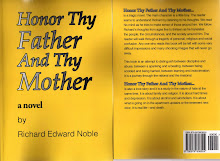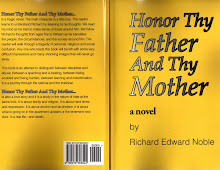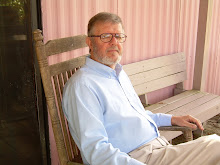
The Kidd Case, Oshkosh, Wisconsin, 1898
"Striking America"
Labor Movement
By Richard E. Noble
Thomas I. Kidd was the general secretary for the Amalgamated Woodworkers’ International Union. Michael Troiber and George Zentner were employees of an Oshkosh lumber company owned by the Paine brothers. There was a strike in the sash, door and blind industry. The strike lasted fourteen weeks. Troiber and Zentner acted as picket captains and Kidd was a labor agitator or organizer sent to the area by the union. After the strike had ended the Paine brothers had the district attorney file a complaint against the three men. The charge was that these three men had organized a criminal conspiracy.
The conspiracy doctrine, or the law of combinations, traces its history back to England and the time of the “Black Death”. There was a Statutes of Laborers passed by the English Parliament in 1350. The Black Death had caused a severe shortage of laborers and consequently wages and labor cost were on the rise. These first statutes were passed in order to control the costs of employers. It was forbidden to the laborers to petition their employers for any wage higher than what was considered a “just price”. This attitude continued and culminated in 1800 in the infamous Anti-Combination Act. This Act declared it a criminal offense for laborers to combine for the purpose of raising their wages or improving their working conditions.
This criminal conspiracy was further defined in the U.S. in 1842 by Chief Justice Shaw of the Massachusetts Supreme Court. A conspiracy, Justice Shaw explained, was a combination of two or more persons who had joined together for a criminal purpose or who had joined together to attain a legal objective but by way of criminal activity.*
During the fourteen week strike in Oshkosh, Wisconsin there had been several incidents of violence, one young boy, a laborer at the mill had been killed. Recognizing that illegal activities had erupted as a result of the strike, could it not then be concluded that the organizers and the leaders of the strike were guilty of a crime as defined under the Conspiracy statutes?
The Woodworkers union hired the famous son of a woodworker to defend the accused. His name was Clarence Darrow. Clarence had defended Eugene V. Debs in the Pullman Strike back in 1894. Debs was charged on two counts, obstructing justice by defying a court order, and conspiracy. The conspiracy charge was eventually dropped but Debs was convicted of the obstruction charge. Darrow considered the Kidd case as an extension of the Deb’s case.
Clarence explained this Conspiracy theory to the jury in more detail. Clarence explained that it is a conspiracy when two or more individuals combine to commit a crime or to engage in an illegal activity. If one man involved in this conspiracy then goes out and commits a crime, then it would follow that all the men involved in the conspiracy are guilty of that same crime. This is the law. But, on the other hand, if two or more men combine for a perfectly legal purpose, building a hospital, for example, and one of the individuals involved in the group goes out and commits a crime, certainly all the members of the group are not guilty of that crime. If they were, then we would be stepping back to the time when it was illegal for men to combine or even assemble for any purpose. In the second example only the man involved in committing the crime is guilty of the crime. This seems simple enough, but this would be a point of contention between labor and management for decades to come.
Clarence repeated over and over that this was not a criminal case. The defendants had combined legally for legal purposes. If there was a conspiracy, Clarence contended it was on the part of the owners who had been combining for years in manager’s organizations for the purpose of starving human beings, enslaving men and killing their wives and children. Clarence pulled no punches. He told the jury that this was a monumental and historical legal decision that they would be making. It was the culmination of centuries of abuse and domination and it would mark a precedent for the future of all mankind. If the jury decided against the workers in this case and for the reason stated in the indictment, conspiracy, then no organization of workers could ever take hold. No men would ever again have the right to assemble peacefully for any purpose. This was not a criminal case. This was a simple manipulation of the law by the powerful to punish freemen in their ancient battle to gain respect and recognition, and more important, to establish their God given right to life. If a man can be denied his right to make a living, how can he maintain his right to life?
The right to assemble peaceably for the purpose of petitioning the government was established in the first amendment to the constitution. The right for workers to assemble peacefully to petition their bosses for better wages or improved working conditions had been granted legally but not in reality. The Paine brothers said that the workers had no right to combine and ask for improvements as a group. Any man could come to them as an individual and be recognized. But for a union of men to come to them with demands, this would not be tolerated by their company. This was intimidation, not petition. Of course if the Paine brothers would not recognize the union’s right to petition, then it certainly would not recognize its right to strike and picket. The Paine brothers considered the Union illegal, the strike illegal and the picket illegal. The union had, in their opinion, conspired for illegal purposes. These men were therefore guilty under the charges of a conspiracy.
But, the right to assemble peacefully was legal. The right to form a union was legal. The right to petition one’s boss as a group was legal. The right to walk off the job was legal. The right to persuade others to walk off their jobs or not to take employment at a particular plant or factory was legal. If these three men were guilty of conspiracy then what about the other sixteen hundred who had participated in exactly the same manner? To convict these men of conspiracy it would be necessary to prove or bring evidence that they had gotten together and planned activities of an illegal nature. They had done no such thing.
Was it illegal to disrupt a man’s business? Not so long as no monopolistic organization was employed. Workers had the right to vie and compete as free men just as bosses had the right to hire men as commodities in the free market labor pool. The workers had the right to dissuade and convince other workers not to work at the Paine plant. They could not employ illegal means to attain this goal. The Paine brothers would not only have to prove that illegal activities transpired but that these illegal activities had been a part of the overall plan of the union.
The Kidd trial lasted three weeks and Clarence Darrow’s summation before the jury lasted two days. Clarence discussed slavery and the evolution of the rights of man. He quoted poetry, scripture, Jesus Christ, the Sermon on the Mount and Tom Paine. His defense was not only a lesson in History but a discussion of philosophy and moral principle. He ridiculed the defense and the Paine brothers. He actually suggested to the jury that if the Paine brothers and their prosecuting team had been around at the time of Jesus Christ, they would, more than likely, have participated in the execution.
The jury took fifty minutes and two ballots to decide. The vote was not guilty. Darrow was paid $250 for his part in the defense of Thomas Kidd and his associates.**
* “Labor Problems in American Industry” by Carroll R. Dougherty.
* “Attorneyfor the Damned” Clarence Darrow in the Courtroom, edited by Arthur Weinberg.
* Books used in this essay include: The Constitution of the United States; Attorney for the Damned, edited by Arthur Weinberg; Labor Problems in American History, by Carroll R. Daugherty.





































